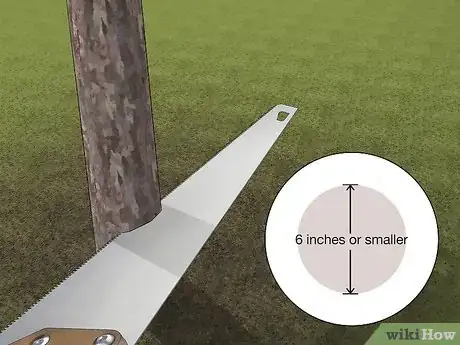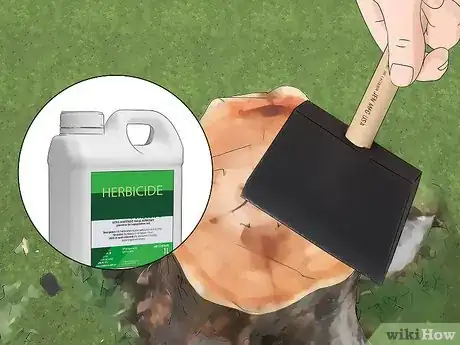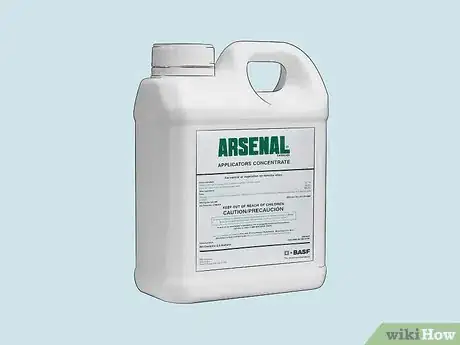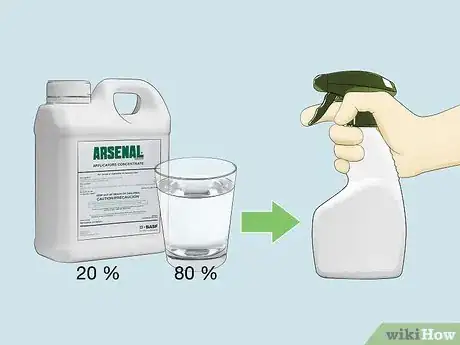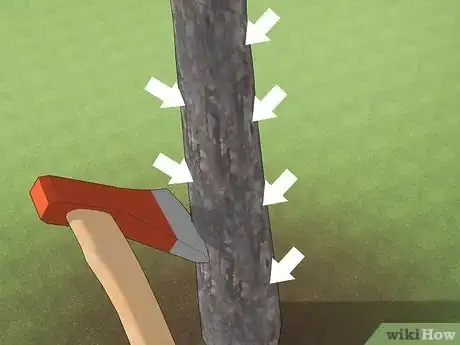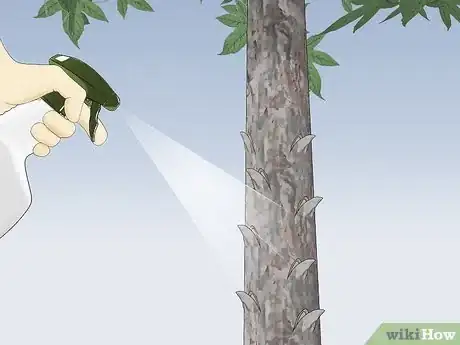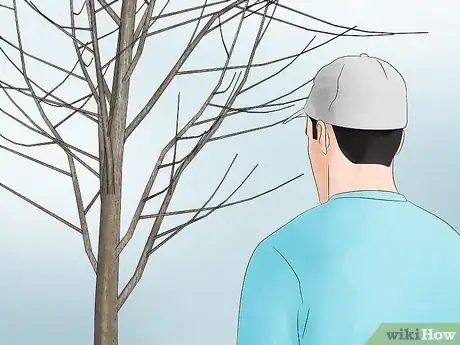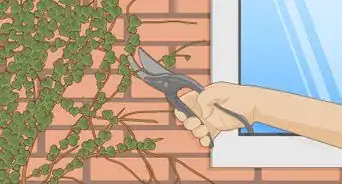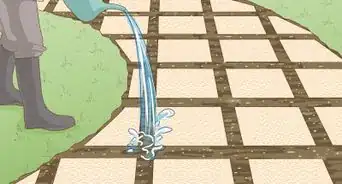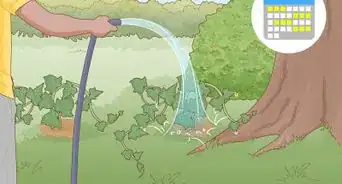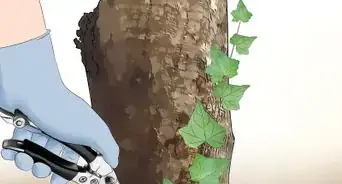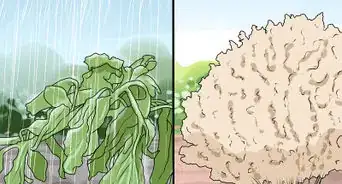This article was co-authored by wikiHow Staff. Our trained team of editors and researchers validate articles for accuracy and comprehensiveness. wikiHow's Content Management Team carefully monitors the work from our editorial staff to ensure that each article is backed by trusted research and meets our high quality standards.
There are 7 references cited in this article, which can be found at the bottom of the page.
This article has been viewed 11,350 times.
Learn more...
Sweet gums are trees that have beautiful colored leaves, drop spiky gum balls, and spread rapidly. Since they tend to take over land quickly, it's natural to want to control their spread. There are two main ways you can help control your sweet gums: chopping down the sapling or making indentations into its bark, and both of these methods require an herbicide spray. With a little bit of time, you'll be on your way to controlling your saplings.
Please note: The WHO considers glyphosate to be a probable human carcinogen. Its use is prohibited in some states and countries. Please check with your local laws and use caution if handling this chemical.
Steps
Cutting Down Saplings
-
1Purchase an herbicide that works well on sweet gum trees. Visit your local garden or home improvement store to look for an herbicide that contains glyphosate, if possible. Arsenal is the most popular herbicide for sweet gums and can be applied in its pure form or mixed with water to dilute it slightly.[1]
- Ask an employee for help picking out the right herbicide if needed.
- Check the herbicide's label to see how much water you'll use to dilute it.
-
2Cut down saplings with a saw if their diameter is 6 in (15 cm) or smaller. If your sweet gum sapling is relatively skinny, it’s easiest to use a hand saw to remove it. Make the cut at the bottom of the tree so a short stump will be all that’s left. Use slow, horizontal movements of the hand saw to cut the tree near the ground nicely.[2]
- Wear eye protection, gloves, and closed-toe shoes when you’re working with the hand saw.
- Try to leave less than 6 in (15 cm) of stump once you cut it.
Advertisement -
3Use a chainsaw to remove the sweet gum if the diameter is more than 6 in (15 cm). If your sweet gum trunk is fairly wide, it’s best to use a chainsaw to chop it down for a quick and easy tree removal. Use the chainsaw to slice the sapling horizontally near the bottom of the tree so you’re left with an even stump.[3]
- Wear eye protection, gloves, and closed-toe shoes when you’re working with a chainsaw.
- If you don’t own a chainsaw, most big box home improvement stores will let you rent one.
- Aim to leave 6 in (15 cm) or less of a tree stump.
-
4Apply the herbicide to the stump as soon as the sapling is cut. Fill a spray bottle with the herbicide or apply the herbicide using a foam brush for a stronger coating. Spray a generous amount of the herbicide onto the stump right after you cut it or dip the foam brush into the herbicide and brush it onto the entire stump. If you wait longer than 30 minutes to apply it, the stump will form a protective coating that the herbicide won’t be able to get through.[4]
- Follow the instructions that come with the herbicide to ensure you mix it properly (many herbicides require water).
- Wear gloves and eye protection when working with the herbicide.
- Drill 3-4 holes into the stump if you'd like the herbicide to reach deeper. Spread the holes out and use a power drill to drill about 2 in (5.1 cm) into the stump.
- The stump will die over time, but you can remove it manually if you'd like it gone faster.
-
5Prune away any new growth that appears and spray it, too. Watch the sweet gum stump to make sure new growth doesn’t form. If it does, use a pair of pruners to clip off the growth and spray it with the same herbicide you used on the stump.[5]
- Keep watching the stump for new growth for at least 3-6 months.
Hacking and Spraying the Tree
-
1Purchase an herbicide for your sweet gum saplings. Look for an herbicide called Arsenal, which is the best herbicide for controlling sweet gums. If that's not available, any herbicide that contains glyphosate and is used on trees will work, too.[6]
- Visit your local garden or home improvement store to find an herbicide.
-
2Fill a spray container with a sweet gum herbicide and water. If you're using Arsenal, fill a spray bottle 20% of the way with Arsenal herbicide and the other 80% of the way with water. Shake the bottle gently to mix the herbicide and water together. If you're using another kind of herbicide, follow the instructions that came with it to dilute it.[7]
- It doesn't take much herbicide and water to kill the sapling. Fill a small spray bottle that you might use for crafts.
-
3Make an indentation in the side of the sapling with a hatchet. Hack at the tree with the hatchet so that you form an indentation that tilts downwards into the tree. This will make it easier for the herbicide to reach the roots.[8]
- There’s no need to cut a huge chunk out of the tree—as long as the hatchet indentation reaches past the bark and into the tree, the cut should work.
- Wear protective glasses and closed-toe shoes when you’re working with the hatchet.
-
4Spray the indentation with the herbicide thoroughly to kill the sapling. Once you’ve made your cut into the tree, spray the inside of the indentation with the herbicide. It doesn’t take a lot—just a couple squirts should work.[9]
- Wear proper protection when you're spraying the herbicide so it doesn't get into your eyes or skin.
- If the sapling is larger than 6 in (15 cm) in diameter, you might consider making another hack into the other side of the tree and spraying it, too.
-
5Examine the sapling every month or so to check its progress. It may take several months for the sweet gum sapling to die, but it's still a good idea to check it periodically. If you notice it continuing to grow, this is a sign you need to hack and spray the sapling again to be sure the herbicide reaches its roots.
- Wait at least 3 months to see if the tree's growth stops.
- The sapling may take up to a year to completely die, so if you want it removed quickly, it's best to remove the sapling and roots manually after you've sprayed it.
Things You'll Need
Cutting Down Saplings
- Sweet gum herbicide
- Hand saw (optional)
- Eye protection
- Gloves
- Closed-toe shoes
- Chainsaw (optional)
- Spray bottle (optional)
- Foam brush (optional)
- Drill (optional)
- Pruners
Hacking and Spraying the Tree
- Sweet gum herbicide
- Spray bottle
- Hatchet
- Eye protection
- Gloves
- Closed-toe shoes
Warnings
- Avoid letting the herbicide get into your eyes or on your skin so it doesn't cause irritation by wearing eye protection, gloves, long sleeves, and closed-toe shoes.⧼thumbs_response⧽
- There are certain plants and other types of trees that the herbicide may damage or kill, depending on the brand you purchase. Check the labels of your herbicide to make sure it's safe for the other plants near your sweet gum saplings.⧼thumbs_response⧽
References
- ↑ https://edis.ifas.ufl.edu/ag245
- ↑ https://www.dec.ny.gov/docs/lands_forests_pdf/prunetree.pdf
- ↑ https://www.youtube.com/watch?v=httHAm4Hzwk#t=8s
- ↑ https://www.youtube.com/watch?v=httHAm4Hzwk#t=30s
- ↑ https://www.youtube.com/watch?v=xgdIXBjK-rU#t=4m15s
- ↑ https://edis.ifas.ufl.edu/ag245
- ↑ https://www.youtube.com/watch?v=TglNG-yjabU#t=20s
- ↑ https://edis.ifas.ufl.edu/ag245
- ↑ https://www.youtube.com/watch?v=TglNG-yjabU#t=59s

